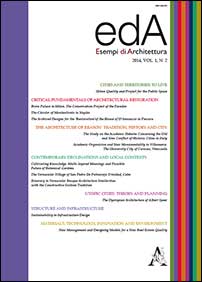Estratto da
ESEMPI DI ARCHITETTURA
International Journal of Architecture and Engineering
The Cloister of Monteoliveto in Naples
ESEMPI DI ARCHITETTURA
International Journal of Architecture and Engineering
The Cloister of Monteoliveto in Naples

the Monteoliveto monastery complex is an extremely compound urban artifact: located in one of thecores of the historic area of Naples, has been neglected and repeatedly violated in its urban shape andin its function. The massive urban renewal process that involved the whole San Giuseppe - Caritàdistrict in the 30’s, under the Fascist Government, upset the historic urban fabric of the area. Thisoperation created new spatial conditions and new possible relationships among existing historicbuildings and new constructions. The Regie Poste e Telegrafi building, designed in the early 30’s andcompleted in 1936 by architect Giuseppe Vaccaro, would have acted as a mediator between the newPiazza Matteotti (its main front) and the more enclosed space of the Main Cloister, one of the few bitsof the monastery to survive the renewal plan. Unfortunately a progressive loss of interest for thecloister as an urban space, combined with the different and often inappropriate functions that cameover time, caused the current state of abandonment and decay of the cloister itself and of the areas toboth sides of the Poste building. The Urban Design Course held by Professor Giovanni Multari at theDepartment of Architecture of the University of Naples Federico II investigated, through a process ofanalysis, research, collective debate and design, the possible solutions to rediscover, reuse andregenerate the extraordinary cloister space.
| pagine: | 27-43 |
| DOI: | 10.4399/97888548778563 |
| data pubblicazione: | Novembre 2014 |
| editore: | Aracne |








